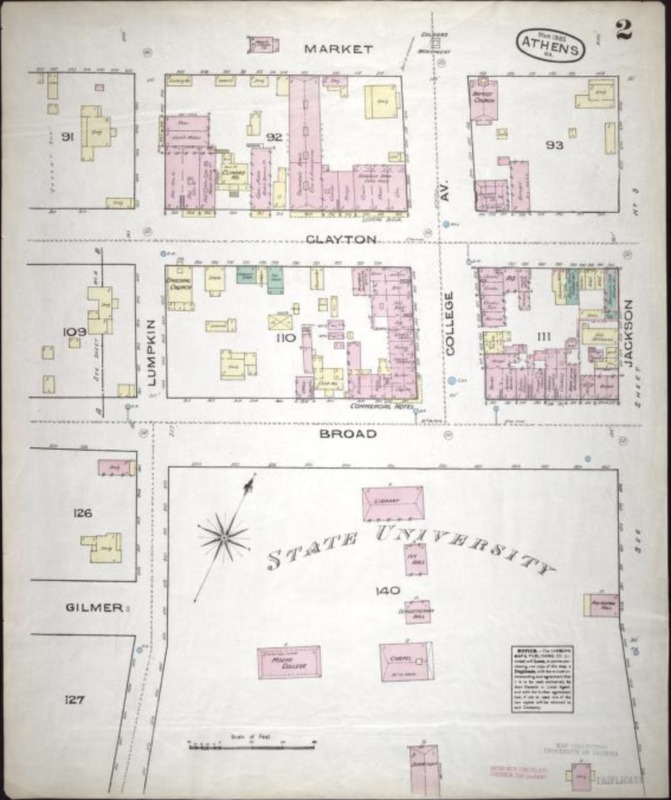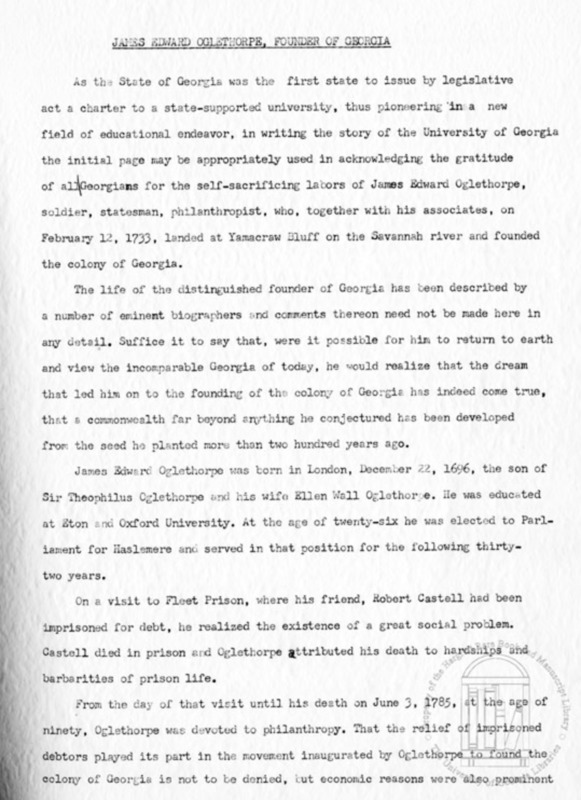Modern Expansion of Broad Street
The Sanborn Fire Insurance maps were originally given to the Library of Congress to document the history of Athens. These maps are significant because they show a detailed picture of not only buildings, but in some causes water mains and other important urban features. For the purpose of this collection, the map documents the landscape of Broad Street in Athens, Georgia in 1885. In the era of the ‘New South’, beginning in the 1870s and lasting until the 1890s, Henry Grady attempted to make Atlanta and the surrounding landscape the capitol of a dynamic south. Despite his progressive vision for the area, Athens remained a chiefly rural city with most of its land devoted to farming. As it did during the commencement of the University, Broad Street served as the epicenter of Athens during the progressive era. This map of Broad Street is evidence of the development that occurred in the town from the time that the university was created until 1885. The addition of two new school buildings can be accredited to the creation of the College of Agriculture and Environmental Sciences and the School of Law. Since Athens was primarily a rural, agricultural city, the College of Agriculture drew many students to the University. To the North of Broad Street, many new businesses and other developments can be seen. The addition of this development is due to Henry Grady’s attempts to move more commercial activities, such as shipping good through railroads, through Athens.
Thomas Walter Reed, the author of the novel History of the University of Georgia, served as an eyewitness to much of the university’s beginning growth. When he retired in 1945, he began writing the historical novel. Since publication, his novel has been a favorite research item in the Hargrett Rare Book and Manuscript Library in the University of Georgia library system. Correlating to the map of campus in 1805, Reed’s novel gives great insight into how the campus changed over time as well as what the changes were happening outside of the university. Without resources such as his novel, a true account of the history of UGA would not exist today.

